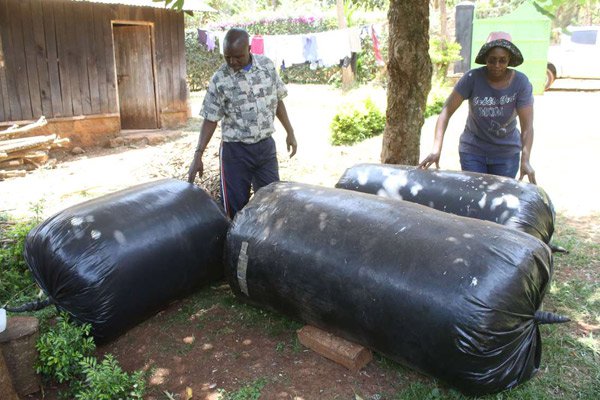In any livestock enterprise, feeding costs will constitute the highest proportion (usually above 70 per cent) of overall costs of production.
The basal diet of ruminants mainly comprises of forage. However, without prior planning, you can easily run into shortage of essential feeds, especially during dry seasons at a critical time when livestock products fetch premium prices. As such, it is important to conserve forage to ensure availability of quality feeds all-year round.
Making silage is one of the best ways to ensure your animals do not lack feeds. However, while most farmers know the procedure of making silage, choosing the silo to use often presents challenges.
To begin with, the silo you use will determine how long your silage lasts and in what quality.
Start by knowing how much silage you will need, and choose an area to be used to meet this requirement.
The amount of silage you require is determined by the number of animals you have, their nutritional requirements and quantity as well as quality of other available forages such as hay.
Nairobi man making Sh. 200,000 monthly profit selling kuku choma, steak
The area required to make the silage is calculated from the expected fodder crop or pasture yields, which are in turn determined by growth curves and management practices (including fertilisation).
The silo space required to accommodate the yield is calculated from the known density of well compacted pasture silage.
Generally, a tonne of silage compacted at 60 per cent moisture content requires a space of 1.4 cubic metres.
This translates to between 650 to 700kg of silage per cubic metre. It is also important to obtain the right machinery best-suited to the silo of choice and magnitude of silage making operation.
Further, ensure the machinery is in good order before the operation starts, since you cannot afford to have a breakdown once the operation has begun.
TYPES OF SILOS
Tower silos
Tower silos are good for making silage because of their elevated heights, which aids compaction and air exclusion.
However, their major disadvantages are high cost of construction and need for specialised machinery to propel silage material over high elevations.
Heap or stack silos
Apart from the polythene sheet cover, no structure is necessary to conserve silage in this silo.
The silage is simply placed on a convenient patch of ground with continuous compaction up to a height of about 2-4m and sealed in a day, or a maximum of three days.
The area round the heap must be drained. Heap silos are cheap to construct and for this reason, they are very popular with many Kenyan farmers.
However, sometimes silage along the sides may get spoilt due to improper compaction.
Trench or pit silos
Trench silos are constructed by excavating soil to form a trench or a furrow on a slightly sloppy ground, meaning the silage material will be ensiled below the ground surface.
It enables easy compaction of the material being conserved. The width should be at least 2m wide to allow compaction and the walls should be slightly slanting inwards towards the floor.
Major limitations include the process is labour intensive and silage may spoil due to rain water seepage.
Polytube or bag silos
A polytube for silage making is a seamless 1,000 micron gauge open ended bag ranging between 2-2.5m long. It is tied on one end, filled with the material being ensiled and then tied at the top for fermentation to take place.
It should be stored away from direct sunlight with some weights placed at the top. A single bag silo can hold between 350 to 500kg of silage and is suitable for small-scale farmers.
The main limitation of this type of silo is destruction by rodents and high labour requirements in the long run.
Tube Silage in Kenya: Bunker or walled-surface silos
Bunker silos are used in flat areas unsuitable for trench silos. Above-ground walls are constructed using concrete or timber braced with poles.
Timber walls that come into contact with silage should not be treated with preservatives but should be covered with polythene sheets to prevent moisture and acid penetration.
Concrete floors are usually needed for easier loading and to minimise feed waste. Bunker silos require adequate drainage. They are suited for medium and large scale farmers.
Sealing the silage
The most-effective way commonly used for sealing the silage is by using a sheet of polythene, at least 250 microns thick (preferably 1,000 microns) to prevent rainwater from entering.
White polythene is preferable due to its superior UV light resistance and reduced silage temperatures beneath it. Allowance must be made for shrinkage and drainage by building up a crown in the centre of the silo.
Always use large enough polythene sheets to avoid seams, but if this is not possible, ensure that the sheets overlap over a width of at least 45cm then cover the seam with soil.
The sheeting can also be covered with used vehicle tyres, close to one another to keep the silage compacted and at the same time prevent the polythene sheet from being blown open by the wind. Tube Silage in Kenya.








